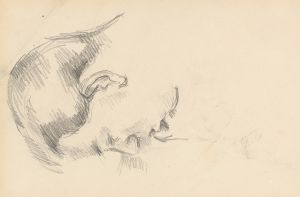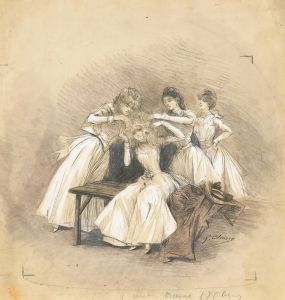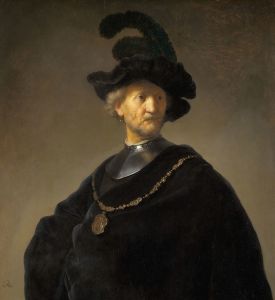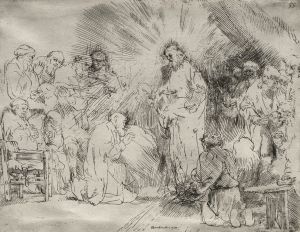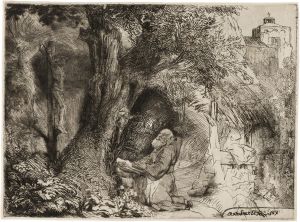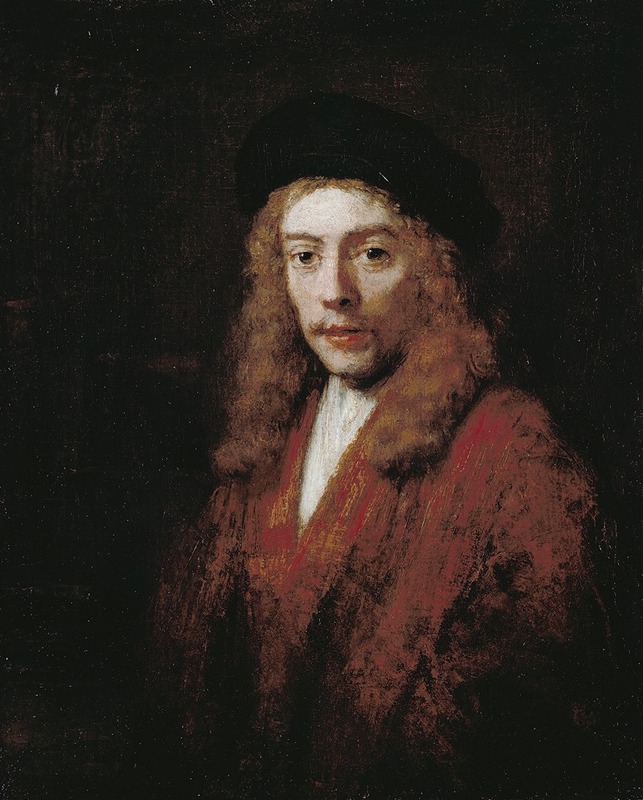
A Young man, perhaps the Artist’s Son Titus
A hand-painted replica of Rembrandt van Rijn’s masterpiece A Young man, perhaps the Artist’s Son Titus, meticulously crafted by professional artists to capture the true essence of the original. Each piece is created with museum-quality canvas and rare mineral pigments, carefully painted by experienced artists with delicate brushstrokes and rich, layered colors to perfectly recreate the texture of the original artwork. Unlike machine-printed reproductions, this hand-painted version brings the painting to life, infused with the artist’s emotions and skill in every stroke. Whether for personal collection or home decoration, it instantly elevates the artistic atmosphere of any space.
"A Young Man, perhaps the Artist’s Son Titus" is a painting by the renowned Dutch artist Rembrandt van Rijn, created around 1660. This artwork is an oil on canvas and is part of the collection of the Kunsthistorisches Museum in Vienna, Austria. The painting is notable for its intimate portrayal and the masterful use of light and shadow, characteristic of Rembrandt's mature style.
The subject of the painting is a young man, traditionally identified as Titus van Rijn, Rembrandt's only surviving son with his first wife, Saskia van Uylenburgh. Titus was born in 1641 and was a frequent subject in Rembrandt's works. The identification of the young man as Titus is based on the resemblance to other known portraits of him, although it is not definitively confirmed.
In this painting, the young man is depicted in a contemplative pose, with his head slightly tilted and his gaze directed downward. He is dressed in a simple yet elegant outfit, which includes a dark cloak and a white shirt, with a soft hat resting on his head. The background is dark and unobtrusive, which serves to highlight the figure's face and expression. Rembrandt's use of chiaroscuro, the contrast between light and dark, is evident in the way the light falls on the young man's face, creating a sense of depth and volume.
Rembrandt's technique in this painting reflects his ability to capture the psychological depth and individuality of his subjects. The brushwork is loose and expressive, particularly in the rendering of the clothing and hair, which adds to the lifelike quality of the portrait. The subtle play of light and shadow across the young man's face suggests a moment of introspection or quiet thoughtfulness.
The painting is a testament to Rembrandt's skill as a portraitist and his ability to convey the inner life of his subjects. It is also an example of his later work, where he focused more on the emotional and psychological aspects of his subjects rather than the detailed realism that characterized his earlier portraits.
"A Young Man, perhaps the Artist’s Son Titus" is part of a broader collection of works by Rembrandt that explore themes of family, identity, and the passage of time. While the exact circumstances of the painting's creation are not documented, it is believed to have been painted during a period when Rembrandt faced personal and financial difficulties. Despite these challenges, his work from this time is marked by a profound depth of feeling and technical mastery.
The painting remains an important piece within Rembrandt's oeuvre and continues to be studied and admired for its artistic and historical significance. It offers insight into the personal life of one of history's greatest artists and serves as a poignant reminder of the enduring power of portraiture.






